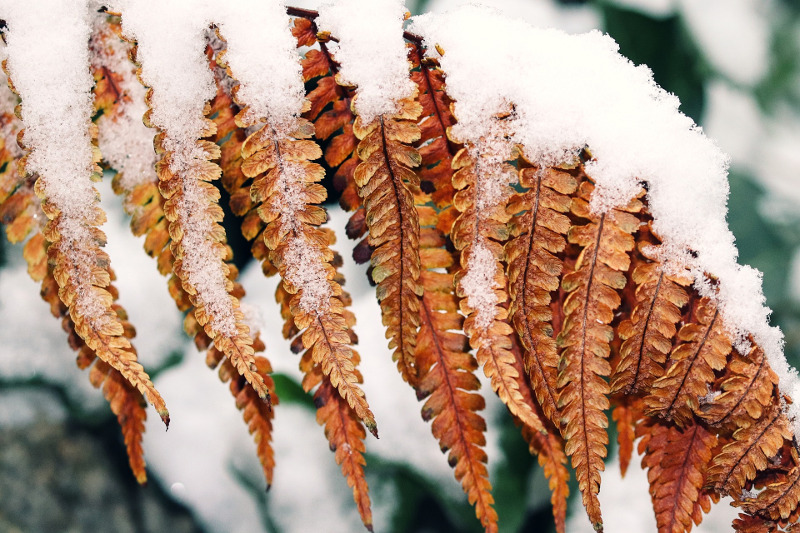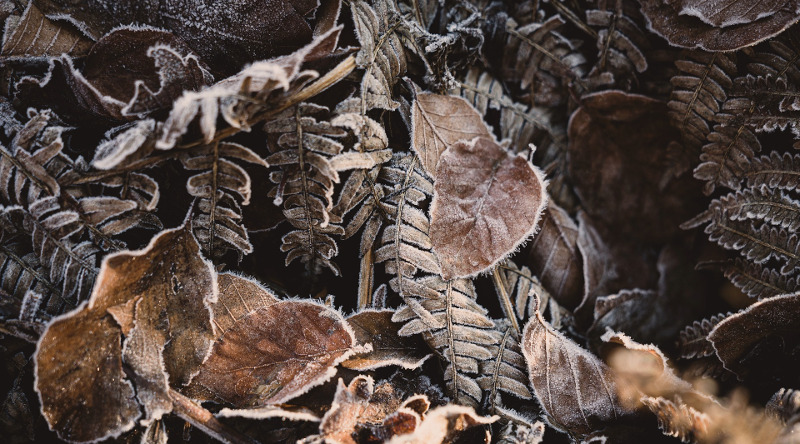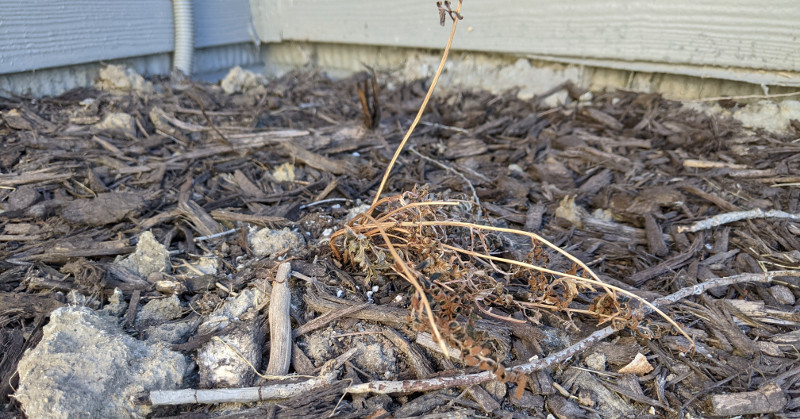With over 10,000 varieties of fern to choose from, there is a perfect one for every zone in the US. Depending on the variety, ferns grow the best in USDA zones 2-10. There are some cold hardy ferns that will grow in zones 6-7.

Ferns plants in the ground can be left as is the entire winter. The fronds will protect the plant’s center crown, where new growth will emerge in the spring.
Ferns are a hardy perennial plant that will grow back each year. Many gardeners bring potted ferns indoors to continue growing during the cold weather season. The great thing about a fern if it is planted in the ground is that there is nothing that needs to be done to winterize it.
The spent fronds protect the plant from the elements. The fronds will dry up and decompose, protecting any new growth that emerges in the spring. In the spring, simply remove the decomposed foliage and allow the new shoots to grow.
Cutting Back Ferns for Winter
Ferns do not need to be cut back for the winter unless you are bringing a potted fern indoors to grow during the cold weather season. Your fern has most likely grown fairly large during the summer. It is a good idea to cut back the plant before you bring it indoors.

Cut any back long stragglers that are making the plant large in size. You can cut up to several inches of fronds, as the plant will certainly grow back. Trimming for shape is also a good idea. When the trimming is completed, hose off the plant to wash off any pests that may have been disturbed.
Fern Winter Care in Pots
A fern is one of the easiest plants to overwinter as long as you prepare it before a hard freeze sets in. Give your fern a good prune, cutting off several inches of outside fronds. Leave the center of the plant alone. Allow the plant to dry out before bringing it indoors.
Choose a cool location such as a basement or garage to store the plant. It is best to keep the plant out of direct sunlight. The plant will be dormant for the season and will only need watering once a month.

Watering Ferns in Winter
Ferns planted in the ground typically do not need additional watering during the winter. The snow or rain will be enough moisture throughout the season. Ferns thrive in consistently moist soil and do not like to be dry.

It can be a challenge to keep an indoor fern happy as this plant likes humid conditions. Water the plant when the soil is dry to the touch. It is also a good idea to mist your fern once or twice a week. It may also be necessary to soak the entire container in the sink or tub to give the root ball a good drink.
Growing Ferns Indoors
If you decide to grow your potted fern as a house plant for the winter instead of allowing it to go dormant in a cool space, it will take a bit of work. You will need to create the right indoor growing conditions that will mimic the outdoor elements that the fern needs.
After trimming the plant and spraying any pests off of the fronds, place the container in a sunny, southern facing location. Water when the soil feels dry, and mist the plant as needed to create humid conditions. This will help keep the plant from drying out. It is not necessary to fertilize during the winter as the plant is in a dormant period of growth.
Steps To Care For Ferns in Winter
During the winter months ferns will grow well as a houseplant as long as you give them the same indoor growing conditions as they would get outdoors. This means providing a moist humid environment will moist soil.
Step 1- Trim the fern, focusing on the large fronds on the outside of the pot.
Step 2- Spray off the plant to remove loose pieces of plant and unwanted pests.
Step 3- Place the container in a sunny southern facing window.
Step 4- Water to keep the soil moist but not soggy.
Step 5- Mist the fronds as needed to create a humid atmosphere for the plant.
Step 6- Avoid fertilizing.
Step 5- Remember the fern is in it’s dormant period. Don’t expect the same growth.
How To Overwinter Boston Ferns
 |
Author Chris Link - Published 11-17-2021 |
